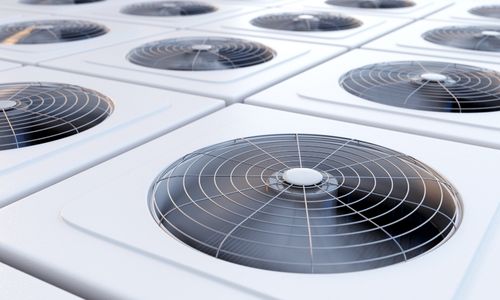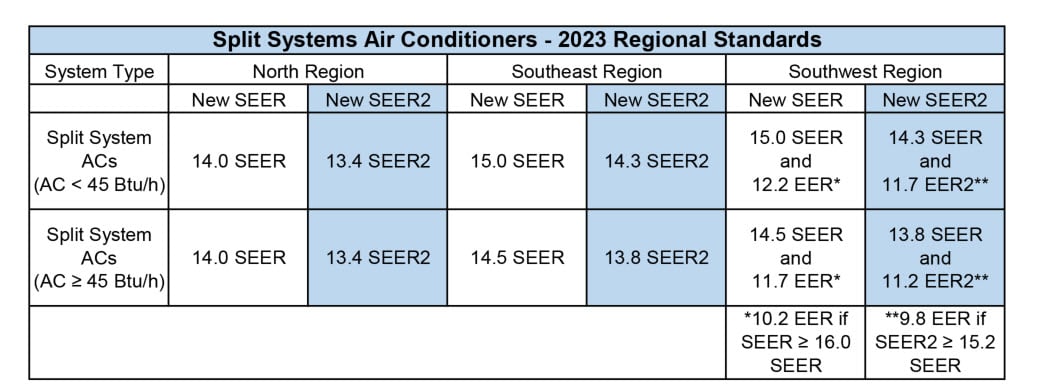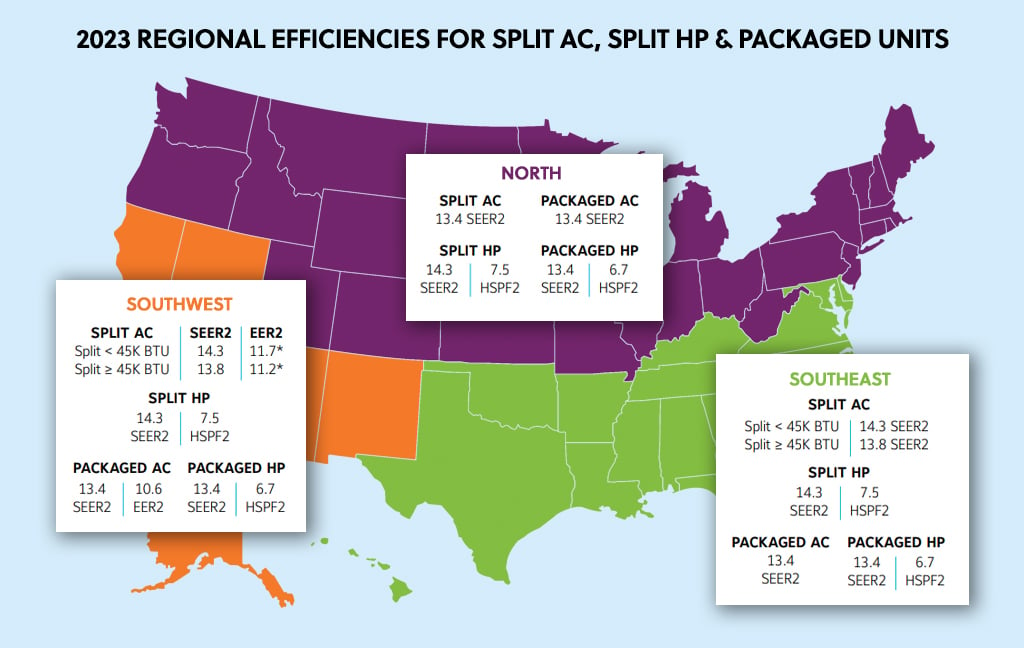Compliance with the Department of Energy’s New SEER2 Requirements Before January 1, 2023 and What To Do if You Cannot Timely “Install”

January, 1, 2023, new Federal minimum efficiency standards for air conditioners and heat pumps, known as Seasonal Energy Efficiency Ratio 2 (SEER2), will go into effect across the United States. The new standard has created a number of issues for projects under construction because the new law does not contain a grace period for transition and some local building officials have indicated that approved building permits will not exempt projects from the new requirements.
Florida developers, contractors, and design professionals must be mindful of the fast-approaching deadline to comply with SEER2. If you are in possession of air-conditioning units that do not comply with the heightened efficiency requirements, all efforts must be undertaken to ensure that such non-compliant systems are “installed” prior to the January 1, 2023 deadline.
Developers and contractors who purchased non-compliant cooling units, but will not be able to install them before the January 1, 2023 deadline, must either modify their equipment or obtain compliant equipment.
Failure to comply with SEER2 can result in serious fines and penalties. In addition, local building officials have already indicated that they will not issue a Certificate of Occupancy (CO) without demonstrating compliance.
Introduction
As we begin to wind down 2022, the rapidly approaching new year brings a significant change to the heating, ventilation, and air conditioning (HVAC) landscape. Beginning on January, 1, 2023, new minimum efficiency standards for air conditioners and heat pumps will go into effect across the United States. The new standard, Seasonal Energy Efficiency Ratio 2 (SEER2), provides for a higher minimum efficiency rating than its predecessor, SEER.
All air conditioning and heat pump units installed in the United States will be required to meet the updated SEER2 standards by the January 1, 2023 deadline. The following memorandum provides guidance for developers and contractors to ensure their compliance with new laws to avoid fines, penalties, or delays to the completion of construction projects.
Background: An Overview of SEER
Federal standards for equipment efficiencies are implemented by the U.S. Department of Energy (DOE) in accordance with the Energy Policy and Conservation Act (EPCA) of 1975. In 2015, the DOE implemented Seasonal Energy Efficiency Ratio (SEER), as the standard measure of efficiency for central air conditioning systems. SEER is the ratio of total cooling capacity during normal periods of operation divided by the total electric energy input over that same period. This ratio can be represented by an equation that divides BTUs by watt-hours.
A higher SEER corresponds to less electricity required for a central air conditioning unit to do its job. Currently, the U.S. Department of Energy (DOE) has a minimum energy conservation standard of 13 SEER in the North and 14 SEER in the South. Most manufacturers design central air conditioning systems to operate at or above those standards.
Under SEER (and SEER2), the United States is divided into three different regulatory regions: North, Southwest, and Southeast (which includes Florida). Each region has its own specific climate and heating/cooling needs, so the new SEER2 requirements will also impact each region to a different extent.
How is SEER2 Different?
By replacing SEER with SEER2, the DOE is updating air conditioner and heat pump efficiency standards to reflect improvements in the accuracy of testing, as well advancements in HVAC technology. The main difference between SEER and SEER2 is the testing conditions for each rating system.
Current SEER testing conditions do not properly account for the influence of poorly designed ductwork, which often lead to increased static pressures and energy consumption. Under SEER protocols, the external static test pressure was often not high enough to replicate real-world applications.
For SEER2, a new testing procedure, known as M1, raises the static pressure used in the lab. This change more accurately represents real world conditions and leads to efficiency ratings that are more accurate.
While these differences may seem like mere tweaks, they produce different data values and warrant a new rating system. As a result of the new testing protocol, SEER2 ratings for cooling equipment will be approximately 5% lower than SEER ratings in most cases.
SEER 2 Minimum Equipment Efficiency Rating Changes: Critical for Compliance
The following are the regional standards set forth by SEER2:
- North Region: Residential air conditioners must have a SEER2 rating of 13.4 (or SEER of 14)
- Southeast Region (including Florida): Residential air conditioners below 45,000 BTUs must have a SEER2 rating of 14.3 (or SEER of 15). Air conditioners 45,000 BTUs - 65,000 BTUs must have a SEER2 rating of 13.8 (or SEER of 14.5).
- Southwest Region: Residential air conditioners below 45,000 BTUs must have a SEER2 rating of 14.3 (or a SEER of 15) and an EER2 of 11.7 (9.8 EER2 if SEER2 ≥ 15.2). Residential air conditioners 45,000 BTUs – 65,000 BTUs must have a SEER2 rating of 13.8 (or a SEER of 14.5) and an EER2 of 11.2 (9.8 EER2 if SEER2 ≥ 15.2).


Effective Deadline for Compliance
As mentioned above, SEER2 becomes effective on January 1, 2023. This means that after January 1, 2023, all air conditioning equipment must comply with the new standard.
Of critical note, the compliance date varies between Northern and Southern states.
- Northern states: compliance is determined by manufacturing date
- Southern states: compliance is determined by installation date.
Importantly, the regulation defines installation of a central air conditioner as the connection of the refrigerant lines and/or electrical systems to make the central air conditioner operational.
As a Southern state, compliance in Florida will be measured by the date of installation. This means that any equipment manufactured prior to January 1, 2023 cannot be installed after December 31, 2022. Therefore, it is critical that developers and contractors who are currently in possession of air conditioning systems get those systems installed before the end of the year. Alternatively, if installation of compliant equipment is not feasible before January 1, 2023, developers and contractors must find alternate means to satisfy the SEER2 requirements.
What If I Purchased Equipment Manufactured Before 2023, Which Cannot Be Installed Until After 2023?
The installation deadlines for air conditioning systems in the Southeast and Southwest regions will require additional planning and coordination between HVAC designers, HVAC contractors, equipment manufacturers, and home builders. Existing stock of single and two-stage split system AC units tagged using the outgoing SEER and HSPF rating will be allowed after January 1, 2023 deadline provided that the FTC label meets the 2023 efficiency standard. For example, a 3.5-ton AC unit labeled as 15 SEER will be allowed. To verify if the condensing unit is compliant, check the SEER and region on the EnergyGuide label.
The change from SEER to SEER2 has made inventory management in the South and Southwest regions more complicated in ensuring existing inventory that is sold complies with the new efficiency standards. Compliance with the 2023 standards is based on the least efficient combination of indoor and outdoor units, commonly referred to as the coil-only rating. This rating is listed on the equipment's energy guide label.
For developers/contractors who have purchased equipment that was manufactured before the January 1, 2023 deadline, there will be no need to purchase new equipment if the SEER rating on the EnergyGuide label is 15 or greater.
If the SEER rating is not at least 15, the equipment can still be modified to achieve the minimum efficiency standards set by SEER2. In the event of modification, however, the equipment will need to be recertified by the manufacturer (or a third party authorized by the manufacturer) and the certification must be accepted by the DOE.
Consequences of Non-Compliance
Failure to comply with SEER2 can result in serious fines and penalties. In addition, local building officials have already indicated that they will not issue a Certificate of Occupancy (CO) without demonstrating compliance.
Will There Be Relief to Allow for a Smooth Transition from SEER to SEER2?
Despite fierce lobbying from many prominent developers and HVAC manufacturers, the DOE has yet to issue guidance regarding whether there will be a grace period during which developers/contractors who purchased air conditioning units prior to the January 1, 2023 deadline will be able to install the non-compliant units following the January 1, 2023 deadline.
Interestingly, when the DOE first implemented SEER in 2015, it did not penalize installers who installed units manufactured prior to the effective date of January 1, 2015 up until July 1, 2016 (18-month grace period). With that precedent, there is optimism that they could do the same, but time is running out.
